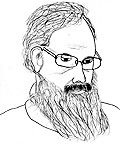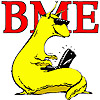
|
| SoE home |

|
| Kevin Karplus's home page |

|
| Biomolecular Engineering Department |
CASP (the critical assessment of structure prediction) is a
bienniel world-wide assessment of the state of protein structure
prediction. Our group at UCSC has always done well in it (starting
with our first attempt in CASP2). The CAFASP experiments are
parallel experiments using the same target proteins, but only
allowing fully automatic predictions by servers.
Our old SAM-T02 server did not do as well:
The ancient (and now obsolete) SAM-T99 server did even worse:
The SAM-T02 server is getting dated---it was only in the middle of the
pack for servers, and the SAM-T99 server is positively ancient, with
expectedly poor performance.
I've looked briefly at the CASP-supplied GDT plots for all the targets and tried to
assess how well we did relative to other groups for each target. The
notes on this are in comparison-with-others.
I have also done a "smooth GDT" evaluation of all my models, including
unsubmitted ones. The summary for all models is in gdt.summary and the list of GDT score, smooth
GDT score, and RMSD fore each model is in Txxx/decoys/evaluate.rdb (or
evaluate_1.rdb, evaluate_2.rdb, for single-domain evaluations).
Smooth GDT curves for a particular target can be created with
gnuplot, using the script in the
subdirectory of the target.
The evaluate.rdb files have been updated to include log of RMSD scores
and "clens"---a new contact-based evaluation function.
The GDT and smooth_GDT scores are essentially interchangeable, with
One can predict the log RMSD and log RMSD_CA scores from the GDT and
clens scores:
Looking at RMSD values of the fit when the clens or GDT values are
perfect gives us an idea of the lower limit of resolution for the
evaluation method.
The only apparent advantage that smooth_GDT has over GDT is that it
allows detection of smaller differences in very good predictions, but
clens is even more sensitive to such small errors.
Unfortunately, some of the outliers for clens vs. GDT are not very
promising for clens: on very short sequences that lack a core (such
as the 24 residues of T0229_1) the clens evaluation seems overly
pessimistic. I still need to look at other outliers to see if clens
or GDT is a better measure of quality for them. I also need to run
evaluations on other people's predictions, since there may be more
extreme outliers there (clens may be more sensitive to overcompaction
than GDT, for example).
The linear fits for log_rmsd_ca and log_rmsd are closest for GDT, very
slightly worse for smooth_GDT, and quite a bit worse for clens.
The only advantage clens seems to have so far is that it is fast and
determinisitic, not requiring sampling superpositions---it is
computed by comparing distance maps.
If we do a non-linear fit of GDT from clens, we get a pretty good fit with
The non-linear fit can be reduced to a one-parameter fit:
Even better fits for smooth_GDT are with
smooth_GDT =approx 100/c *(1-x)*(x^3+c)
targets/domains rank (using 1st model) rank (best of 5 models) All 87 8 6 25 CM easy 21 4 18 CM hard 9 6 19 FR/H 10 12 15 FR/A 7 7 10 NF 2 6
targets/domains rank (using 1st model) rank (best of 5 models) All 87 69 56 25 CM easy 59 62 18 CM hard 48 43 19 FR/H 64 59 15 FR/A 113 96 10 NF 122 93
targets/domains rank (using 1st model) rank (best of 5 models) All 87 102 104 25 CM easy 88 80 18 CM hard 72 74 19 FR/H 120 121 15 FR/A 155 153 10 NF 144 139 Personal assessment by Kevin Karplus:
Two groups were clearly superior to us (Ginalski's and David Baker's)
and there were 3 or 4 other groups whose results were comparable to
ours (Kolinski+Bujnicki, Skolnick-Zhang, GeneSilico). The exact list
of the "comparable" groups depends on whether you put more weight on
homologous modeling or non-homologous modeling.
smooth_GDT =approx 0.9423 * GDT,
but when the models are really bad, smooth_GDT/GDT is slightly larger---scattered
around 1.
log_RMSD =approx 2.8864 * clens + 0.116975
log_RMSD_CA =approx 3.27581 * clens -0.280389
log_RMSD =approx -0.0298756 * GDT + 3.50611
log_RMSD_CA =approx -0.0354623 * GDT + 3.66133
log_RMSD =approx -0.0317885 * smooth_GDT + 3.50091
log_RMSD_CA =approx -0.0379614* smooth_GDT + 3.66936
For clens=0, RMSD=approx 1.124 and RMSD_CA=approx 0.7555
For GDT=100, RMSD=approx 1.6796 and RMSD_CA=1.1220
For smooth_GDT=100, RMSD=approx 1.3800 and RMSD_CA=0.8809
GDT=approx -123.664*clens^3+125.779*clens^2-100.631*clens+100.888
(restricting the fit to models longer than 40 residues).
Even with this non-linear scaling of clens, clens is not quite as good a
predictor of rmsd as GDT is.
GDT =approx 100/b *(1-x)*(x^2+b)
with b=approx 0.757291. The same curve for smooth_GDT can be fit with
b=approx 0.884582.
for c=approx 0.6485, but this form is not as good a fit
for GDT as the x^2 form.
|
|
|
UCSC Bioinformatics research |
Questions about page content should be directed to
Kevin Karplus
Biomolecular Engineering
University of California, Santa Cruz
Santa Cruz, CA 95064
USA
karplus@soe.ucsc.edu
1-831-459-4250
318 Physical Sciences Building